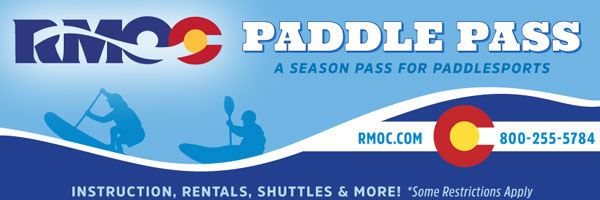by April Lewandowski, CW Member
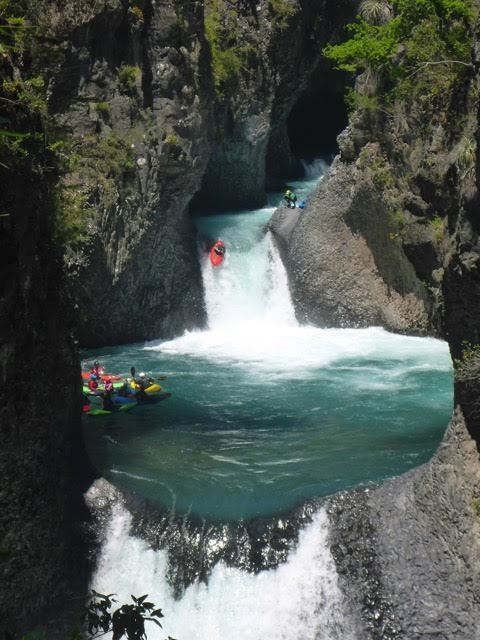 On January 23, Josh Oberleas’s Facebook post showed a Google Maps image of his upcoming travel itinerary. Only 8,430 kilometers and 113 hours to go. And even then, he’ll only be halfway home.
On January 23, Josh Oberleas’s Facebook post showed a Google Maps image of his upcoming travel itinerary. Only 8,430 kilometers and 113 hours to go. And even then, he’ll only be halfway home.
Josh Oberleas, his fiancé, and their van, the Fiel Furioso, will begin their journey back to North America in March; they are headed north from the Pucon region in Chile back to Salida, Colorado. While traveling, Josh will be spreading the gospel according to ACA, the American Canoeing Association, teaching South Americans how to be better whitewater kayakers and instructors. Josh is an ACA certified instructor trainer. In fact, several years ago, he taught an instructor-level class here in Colorado.
Chile is not only a place for Josh, but a season. For the past seven years, he’s been guiding year-round, spending summers in Colorado and then heading to Chile for a South American summer. “I’m not much of a winter person,” he says.
This past fall, Josh returned to Chile to work for David Hughes’s Pucon Kayak Hostel, which is affiliated with the Patagonia Study Abroad School. A student attending this school could expect a semester schedule to include Principles in Videography Production; Spanish; Advanced Wilderness First Aid; Leadership, Negotiation Skills, and Decision Making; and the “waterfall” course (also known as Expert Whitewater Kayaking for Competition and Instruction).
The semester didn’t fill, so Josh found himself going from a coach to a guide for class IV/V paddlers. This is quite a change from his summer gig at the Rocky Mountain Outdoor Center in Salida. At RMOC, about 80 percent of the guiding is on class II water, teaching people how to get in and out of eddies. These trips are fulfilling because he gets to introduce beginners to the beauty and thrill of Colorado whitewater. The Arkansas River, according to Josh, is the best place to learn in Colorado. Not only is it in the “banana belt,” making it a little warmer than the high mountain rivers, but also, “there are so many sections to fit different skill levels,” he says.
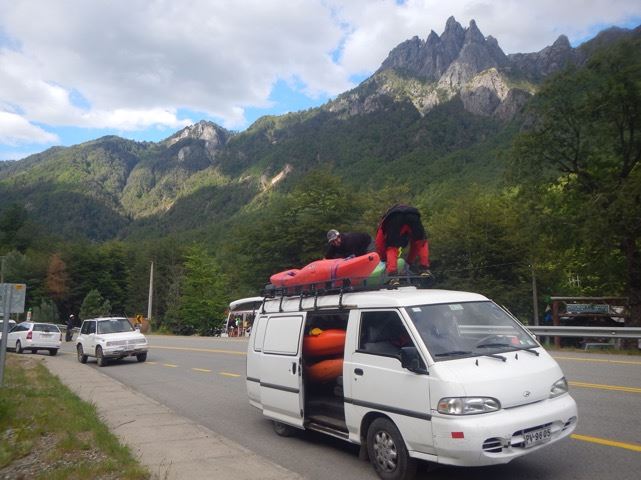 The rivers in Chile raise the stakes, however. “To take twelve people into an unescapable canyon where the only way to get out is with ropes and having to keep your head straight is really rewarding,” he says. “It’s a different world watching your clients go off waterfalls.”
The rivers in Chile raise the stakes, however. “To take twelve people into an unescapable canyon where the only way to get out is with ropes and having to keep your head straight is really rewarding,” he says. “It’s a different world watching your clients go off waterfalls.”
Reflecting on this past season in Chile, Josh explains that the guiding also involved instruction. It’s hard to imagine that a class IV/V paddler could use much feedback, but Josh routinely provided video analysis for his clients, helping them see how to boof more efficiently or overcome the deer-in-the-headlights stall when reaching the top of a big drop.
Somewhat jokingly, I ask Josh if the ACA has a progression for running waterfalls, since they happen to have a progression for everything else, from wet exits to rolling. “No, they don’t. That’s probably why we’re doing it here in South America,” he laughs. He then provides me with a simple approach to teaching waterfall running:
1. Start with a group of motivated paddlers with solid class IV or moving-into-class-V skills.
2. Take them to the most perfect waterfall setting, the Seven Teacups on the Rio Claro.
3. And then, run the drops.
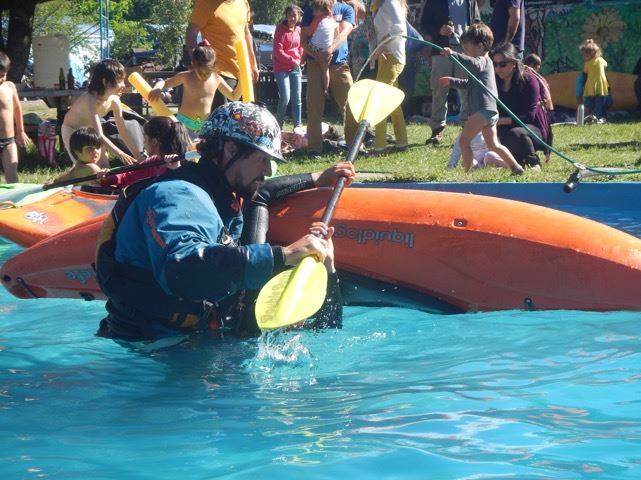 Josh also shares his bite-sized piece of wisdom when it comes to running waterfalls: “Be active in the air.” He says many paddlers do well setting up for the drop, but “there’s lots you can do in the air to control the boof and control the landing.”
Josh also shares his bite-sized piece of wisdom when it comes to running waterfalls: “Be active in the air.” He says many paddlers do well setting up for the drop, but “there’s lots you can do in the air to control the boof and control the landing.”
“Be active in the air,” means that during the free-fall, one can make physical adjustments to prepare for the next move. For instance, “Right after you take your forward boof stroke, you can lift your knees up toward your chest to flatten the boat to get the good boof.” Or, Josh continues, “If you want to lessen the impact on the landing, you can push your feet down and kind of scoop your boat into the water.”
Once he started talking about the ins and outs, he had me thinking perhaps there was a chapter in the ACA manual on running waterfalls. “You can actually change edges. If we need to go to the left we land, then it’s a good idea to land off the waterfall on the left edge to carve us to the left,” he says with enthusiasm.
Through his teaching, Josh has observed that running waterfalls brings paddlers growth and confidence. One student sent him a message on Facebook saying, “I feel really lucky to have spent time on the river with you as I’ve learned so much and have had an incredible time. I’ve seen a huge improvement in my paddling in the past few weeks.”
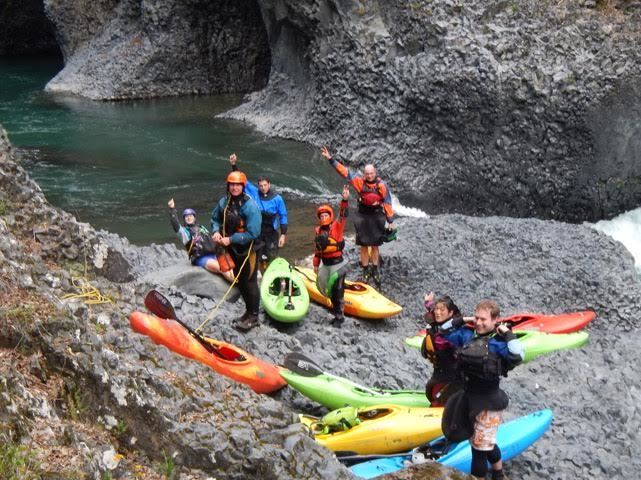 Josh ran his first waterfall on Daisy Creek in 2005 while he was in school at Western State University in Gunnison, Colorado. “I could say I got addicted to it, but the waterfall experience really grew when I first came down to Chile,” he says.
Josh ran his first waterfall on Daisy Creek in 2005 while he was in school at Western State University in Gunnison, Colorado. “I could say I got addicted to it, but the waterfall experience really grew when I first came down to Chile,” he says.
Josh has been building his waterfall-running confidence for some time. His biggest drop? The seventy-foot waterfall Stout 10 on the Middle Palguin in Chile. However, if you’re looking to complete this run, you’re out of luck. This famous waterfall “collapsed on itself about two years ago,” he says.
“It was a straightforward pool drop, and I ran it twice with a group of friends. It was impressive to still be in freefall and think about why I hadn’t hit the pool yet,” Josh says.
I ask Josh where a Coloradoan might find a good starter waterfall. With some hesitation he says, “One of the more straightforward runs for a first waterfall would be Daisy Creek near Crested Butte.“
With a bit more gusto, he mentions two popular destinations for those seeking better waterfalls than what Colorado has to offer. Some folks head to Vera Cruz, Mexico, for a waterfall tour. “But if you really want the good waterfalls, it’s Chile,” he says with a full endorsement. The classic run is the one he mentioned earlier, the Seven Teacups, a picture-perfect set of the ultimate pool-drop experience. Josh mentions that running big drops and teaching others to run them hasn’t been his sole purpose in Chile. As an ACA instructor trainer, Josh travels around to offer ACA Instructor courses in the country. “South America is where we were in the 70s,” he says. The country has realized that adventure tourism is a key element in their growing economy.
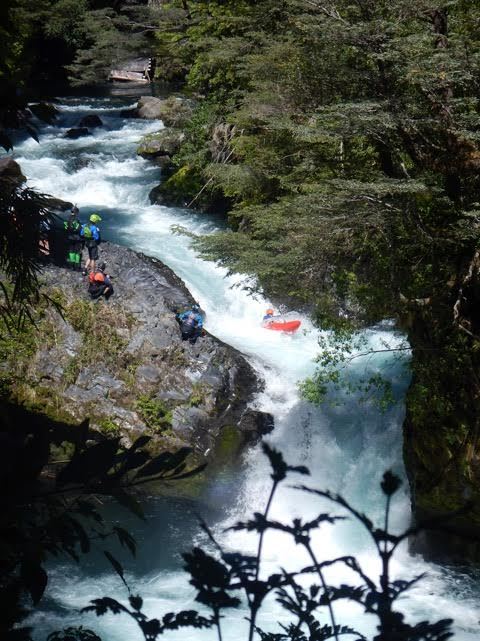 Also, there seems to be a need for the ACA mindset. “The original idea of learning to kayak [in South America] was hop in the boat and follow the guy who knows more in front of you. There was just no real structure,” he says. “It’s been good to bring that [structure] and share it.”
Also, there seems to be a need for the ACA mindset. “The original idea of learning to kayak [in South America] was hop in the boat and follow the guy who knows more in front of you. There was just no real structure,” he says. “It’s been good to bring that [structure] and share it.”
ACA teaches a progression that moves novice paddlers from flatwater to easier whitewater. The rationale, according to Josh, is “You teach people how not to get flipped over before you teach them to roll back up.” The results? “You see a better progression and happier people,” he says.
There are other effects from getting more people into the sport. People who enjoy rivers begin to love and protect them. “What’s really been nice is that with a lot of growth in kayaking here, a lot of people are seeing what they’re doing to the rivers, that the damming isn’t a good thing, and they are realizing that there can be other ways,” he says.
In fact, two major dam projects have been cancelled. “There’s quite a bit of conscious effort here to protect the rivers,” he says.
Josh hopes to be back in Salida by July. As he makes the long journey in his white van with his fiancé by his side, he’ll be stopping along the way to share his love of rivers and the good news about the ACA. And if you’re headed to Crested Butte to run Daisy Creek, keep an eye out for Josh on his favorite run in Colorado, Oh Be Joyful.
April Lewandowski finds one way to get a wintertime boating fix: she watches Grand Canyon paddling videos on her iPad while sitting in her kayak on the living room floor.
Photos:
1. Josh running one of the Seven Teacups with the group at the bottom. Photo: Myles Sanders
2. The Fiel Furioso, which means furiously faithful. Photo: Tessie Ortega
3. Josh teaching rolling in Chile. Photo credit: Tessie Ortega
4. The group before running the first drop on the Seven Teacups. Photo: Josh Oberleas
5. Lukas Reichelt showing us how it is done on the Upper Palguin. Photo: Josh Oberleas
Article Sponsored by:
